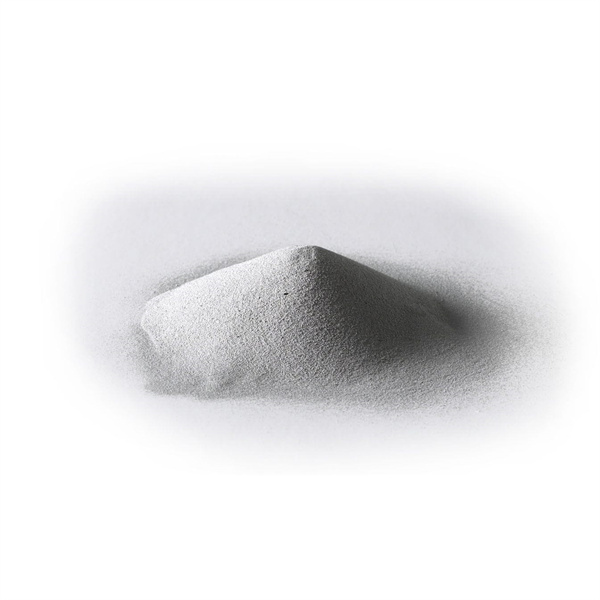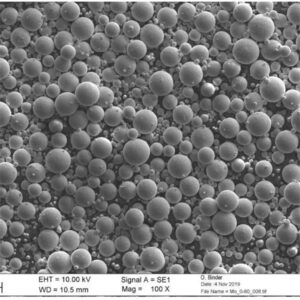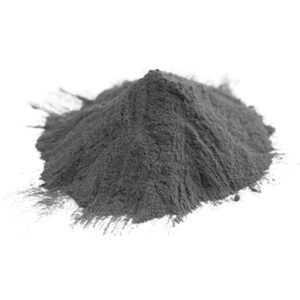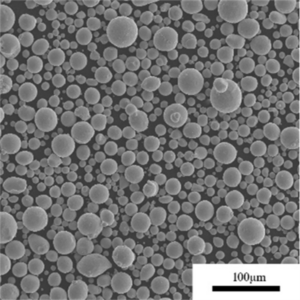Übersicht
Titanpulver ist ein vielseitiger metallischer Werkstoff, der für seine einzigartige Kombination aus hoher Festigkeit, geringer Dichte, Korrosionsbeständigkeit und Biokompatibilität geschätzt wird. Als Pulver erleichtert Titan fortschrittliche Fertigungstechniken wie Metallspritzguss (MIM), additive Fertigung (AM), heißisostatisches Pressen (HIP) und pulvermetallurgisches Pressen und Sintern zur Herstellung komplexer Titanbauteile.
Zu den wichtigsten Anwendungen für Titanpulver gehören Komponenten für die Luft- und Raumfahrt, medizinische Implantate, Automobilteile, Sportgeräte, chemische Verarbeitung und Verbraucherprodukte. Dieser Leitfaden bietet einen umfassenden Überblick über Titanpulver, einschließlich Produktionsmethoden, Legierungszusammensetzungen, Merkmale, Eigenschaften, Spezifikationen, Anwendungen und weltweite Lieferanten. Er soll Ingenieure, Produktdesigner und technische Programmmanager bei der Auswahl und Verwendung von Titan-Pulver.

Herstellung von Titanium-Pulver
Titanpulver wird mit den folgenden Hauptmethoden hergestellt:
Verfahren zur Herstellung von Titanpulver
- Gaszerstäubung - Unter hohem Druck stehendes Inertgas zersetzt geschmolzenes Titan in kugelförmiges Pulver
- Plasma-Zerstäubung - Titan-Elektrodenlichtbögen erzeugen ultrafeines kugelförmiges Pulver
- Hydrierung/Dehydrierung - Titanhydridpulver (TiO2) wird zu feinem Pulver dehydriert
- Mechanisches Fräsen - Kugelmahlen zerlegt Titanspäne in unregelmäßige Partikel
- Plasma-Sphäroidisierung - Unregelmäßiges Pulver, das im Plasma geschmolzen wird, um kugelförmige Formen zu erzeugen
Gaszerstäubung und mechanisches Mahlen sind die gebräuchlichsten Verfahren, bei denen kugelförmige bzw. kantige Pulverformen entstehen. Durch zusätzliche Siebung, Konditionierung und Vermischung werden anwendungsspezifische Partikelgrößenverteilungen erzeugt.
Zusammensetzungen von Titanium Powder
Während handelsübliche reine Titan-Pulver verfügbar sind, enthalten die meisten Pulver für industrielle Zwecke geringe Mengen an Legierungselementen:
Übliche Titanpulver-Zusammensetzungen
| Legierung | Primäre Legierungselemente | Wesentliche Merkmale |
|---|---|---|
| CP Titan | 99.5%+ Ti | Ausgezeichnete Korrosionsbeständigkeit |
| Ti-6Al-4V | 6% Al, 4% V | Hohe Festigkeit, wärmebehandelbar |
| Ti-6Al-7Nb | 6% Al, 7% Nb | Hohe Festigkeit, biokompatibel |
| Ti-555 | 5% Al, 5% Mo, 5% V | Wärmebehandelbar, bearbeitbar |
| Ti-1023 | 10% V, 2% Fe, 3% Al | Hohe Festigkeit, gute Duktilität |
Aluminium, Vanadium und Niob sind übliche Zusätze zur Verbesserung der Festigkeit und Verarbeitbarkeit. Auch Spuren von Bor, Kohlenstoff, Eisen und Sauerstoff kommen vor.
Durch das Legieren werden Mikrostruktur, Härte, Bearbeitbarkeit und andere Eigenschaften maßgeschneidert, während gleichzeitig eine hervorragende Korrosionsbeständigkeit erhalten bleibt.
Merkmale von Titanpulvern
Zu den wichtigsten Eigenschaften von Titanpulver gehören:
Eigenschaften des Titanpulvers
| Charakteristisch | Typische Werte | Bedeutung |
|---|---|---|
| Partikelgröße | 10 - 150 Mikrometer | Sinterverhalten, Oberflächengüte |
| Partikelform | kugelförmig, eckig, dendritisch | Pulverfluss und Packungsdichte |
| Scheinbare Dichte | 1,5 - 4,0 g/cc | Verhalten beim Drücken und bei der Handhabung |
| Dichte des Gewindebohrers | 2,5 - 4,5 g/cc | Indikator für die Kompressibilität |
| Hall-Durchflussmenge | 25 - 35 s/50g | Fließfähigkeit des Pulvers |
| Verlust bei Zündung | 0,1 - 0,5 wt% | Sauerstoff- und Feuchtigkeitsgehalt |
| Pyrophorizität | Keiner | Entflammbarkeit und Vorsichtsmaßnahmen bei der Handhabung |
Die Partikelgrößenverteilung und die Form des Pulvers haben einen erheblichen Einfluss auf den Pulverfluss, die Verdichtung, das Sinterverhalten und die Dichte von gepressten und gesinterten Teilen. Die scheinbare Dichte zeigt die Kompressibilität des Pulvers an.
Eigentum von Titan-Pulver
Zu den wichtigsten Eigenschaften von Titanpulver gehören:
Eigenschaften von Titan-Pulver
| Eigentum | Reines Ti | Ti-6Al-4V | Ti-6Al-7Nb |
|---|---|---|---|
| Dichte | 4,5 g/cm³ | 4,43 g/cc | 4,52 g/cc |
| Zugfestigkeit | 240 MPa | 930 MPa | 900 MPa |
| Streckgrenze | 170 MPa | 860 MPa | 825 MPa |
| Dehnung | 24% | 10% | 15% |
| Elastischer Modul | 102 GPa | 114 GPa | 105 GPa |
| Härte | 80 HB | 334 HB | 321 HB |
| Wärmekapazität | 522 J/kg-K | 526 J/kg-K | 527 J/kg-K |
| Wärmeleitfähigkeit | 7,2 W/m-K | 7,2 W/m-K | 6,7 W/m-K |
Durch die Legierung mit Aluminium, Vanadium und Niob werden Festigkeit und Härte deutlich erhöht. Die spezifischen Eigenschaften hängen stark vom endgültigen Gefüge ab.
Anwendungen von Titanpulver
Zu den wichtigsten Anwendungen für Titanpulver gehören:
Titanium Powder Anwendungen
| Industrie | Verwendet | Wichtige Gründe |
|---|---|---|
| Luft- und Raumfahrt | Strukturbauteile, Turbinenschaufeln, Verbindungselemente | Hohes Verhältnis von Festigkeit zu Gewicht |
| Medizinische | Orthopädische Implantate, Zahnimplantate, chirurgische Werkzeuge | Biokompatibilität, Korrosionsbeständigkeit |
| Automobilindustrie | Pleuel, Ventile, Federn, Befestigungselemente | Geringes Gewicht, Leistung |
| Chemisch | Tanks, Rohre, Ventile, Pumpen | Korrosionsbeständigkeit |
| Sportartikel | Golfschläger, Fahrräder, Helme | Festigkeit, maßgeschneiderte mechanische Eigenschaften |
| Petrochemie | Bohrlochwerkzeuge, Bohrlochkopfteile | Festigkeit, Korrosionsbeständigkeit |
Die einzigartigen Eigenschaften von Titan machen es attraktiv für die Gewichtsreduzierung von Luft- und Raumfahrtkomponenten bei gleichzeitiger Wahrung der mechanischen Integrität in extremen Umgebungen.
Hervorragende Biokompatibilität und Korrosionsbeständigkeit sind ausschlaggebend für die Verwendung in orthopädischen und zahnmedizinischen Implantaten. Durch die Möglichkeit, die Eigenschaften von Titan individuell anzupassen, können Sportartikel mit speziellen Leistungsmerkmalen hergestellt werden.
Spezifikationen für Titan-Pulver
Die Zusammensetzung und Qualität von Titanpulver wird durch verschiedene Standardspezifikationen festgelegt:
Titan-Pulver-Normen
| Standard | Umfang | Partikelgröße | Reinheit | Chemie |
|---|---|---|---|---|
| ASTM B348 | Unlegiertes Ti-Pulver Grad 1-4 | -635 Maschen | 99.5%, 99.9%, 99.95% Ti | O, C, N, H Grenzen |
| ASTM B801 | Ti-6Al-4V-Legierungspulver | -635 Maschen | Ti-, Al- und V-Zusammensetzungsbereiche | Interstitielle Grenzen |
| ISO 23301 | Additive Fertigung Ti-Pulver | 10-45 Mikrometer | 99.5%+ Ti | O, N, C, H, Fe-Grenzwerte |
| AMS 4992 | Ti-6Al-4V-Pulver in Luft- und Raumfahrtqualität | -150 Maschen | Ti-, Al- und V-Zusammensetzungsbereiche | Interstitielle Grenzen |
Darin werden die zulässigen Gehalte an Legierungszusätzen, Verunreinigungen wie Sauerstoff/Stickstoff/Kohlenstoff, Partikelgrößenverteilungen und andere für verschiedene Anwendungen relevante Prüfverfahren festgelegt.
Globale Lieferanten von Titan-Pulver
Viele große Unternehmen produzieren Titanpulver, aber auch kleinere regionale Hersteller:
Titanpulver Hersteller
| Anbieter | Produktionsmethoden | Materialien | Fähigkeiten |
|---|---|---|---|
| ATI-Metalle | Gaszerstäubung | Ti-6Al-4V, Ti-1023, reines Ti | Breites Legierungsspektrum, große Mengen |
| Praxair | Gaszerstäubung | Ti-6Al-4V, CP Ti | Kleine Lose, schnelle Lieferung |
| Zimmerer-Zusatzstoff | Gaszerstäubung, Hydrid-Dehydrid | Ti-6Al-4V, Ti-6Al-7Nb, reines Ti | Sonderlegierungen, Kleinserien |
| AP&C | Plasma-Zerstäubung | CP Ti, Ti-Legierungen | Ultrafeines Pulver 10-45 Mikron |
| Tekna | Sphäroidisierung des Plasmas | Ti-6Al-4V, CP Ti | Umwandlung von Spänen in kugelförmiges Pulver |
| Baoji Hanz Titan | Hydriding | CP Ti, Ti-6Al-4V | Niedrige KostenChinesischer Hersteller |
Viele liefern sowohl Standard- als auch kundenspezifische Legierungszusammensetzungen. Einige bieten die Lohnverarbeitung von Schrott und Spänen zu Pulver an.
Auswahl des Titanpulvers
Zu den wichtigsten Überlegungen bei der Auswahl von Titanpulver gehören:
- Zusammensetzung der Legierung - Ausgewogenheit der gewünschten Eigenschaften wie Festigkeit, Duktilität und Härte
- Reinheitsgrad - Beeinflusst die mechanischen Eigenschaften und das Mikrogefüge
- Größe und Form der Partikel - Beeinflusst Pulverfluss, Dichte, Oberflächengüte
- Scheinbare Dichte und Klopfdichte - Zeigt die Kompressibilität und das Sinterverhalten an
- Chemische Verträglichkeit - Für Einsatzbedingungen wie Säuren oder Salzwasser
- Probenahmeverfahren - Repräsentative Prüfung von Pulverpartien
- Qualitätszertifikate - ISO 9001, AS9100, usw.
- Technisches Fachwissen vom Pulverhersteller
Muster und Prototypen helfen, neue Legierungen und Pulver für eine bestimmte Anwendung zu qualifizieren. Wir arbeiten eng mit renommierten Lieferanten zusammen, um gut charakterisiertes Titanpulver für optimale Ergebnisse zu erhalten.

FAQ
Was ist der Vorteil von plasmagestäubtem Titanpulver?
Die Plasmazerstäubung erzeugt sehr kugelförmige, fließende Partikel mit einer Größe von typischerweise 10-45 Mikrometern. Dies ermöglicht eine hervorragende Sinterdichte und Oberflächengüte.
Warum ist Titanpulver pyrophor?
Pyrophore Titanpulver entzünden sich spontan an der Luft. Dies ist auf die extrem kleinen Partikelgrößen unter 10 Mikron zurückzuführen, die die Oberfläche und die Reaktivität stark vergrößern. Verwenden Sie für pyrophore Pulver Inertgas.
Wie beeinflusst die Partikelform die Eigenschaften von Titanpulver?
Kugelförmiges Pulver fließt gut und bietet eine höhere und einheitlichere Dichte und mechanische Eigenschaften. Unregelmäßiges Pulver bietet eine bessere Grünfestigkeit und Kompressibilität, aber eine weniger vorhersehbare Schrumpfung.
Welche Nachbearbeitungsschritte können die Wiederverwendung von Titanpulver verbessern?
Sieben, Mahlen und thermische Behandlungen ermöglichen die Wiederverwendung von Off-Spec-Pulvern. Die Plasmasphäroidisierung wandelt Späne und gröbere Partikel in kugelförmige Pulver um.
Welche Normen gelten für die additive Fertigung von Titanteilen?
ASTM F3001-14 behandelt die Charakterisierung und Qualitätskontrolle von Ti-Legierungspulver für AM. ASTM F2924-14 enthält Standardtestmethoden für die Bewertung der mechanischen Eigenschaften von AM-Titan.
Kann man eine Verbundstruktur aus Titan und Stahl in 3D drucken?
Ja, einige 3D-Metalldruckverfahren wechseln innerhalb eines Teils zwischen Titan- und Edelstahllegierungen, indem sie einen präzisen Materialwechsel vornehmen, um bimetallische Komponenten herzustellen.
Schlussfolgerung
Titanpulver bietet Ingenieuren dank der einzigartigen Eigenschaften des Metalls große Flexibilität bei der Herstellung von Hochleistungskomponenten. Die sorgfältige Auswahl der Pulvereigenschaften und die enge Zusammenarbeit mit erfahrenen Lieferanten ermöglichen optimale Ergebnisse bei vielen kritischen Anwendungen. Durch kontinuierliche Fortschritte werden die Möglichkeiten, die Qualität und die Kosteneffizienz der Titanpulvermetallurgie weiter ausgebaut.



